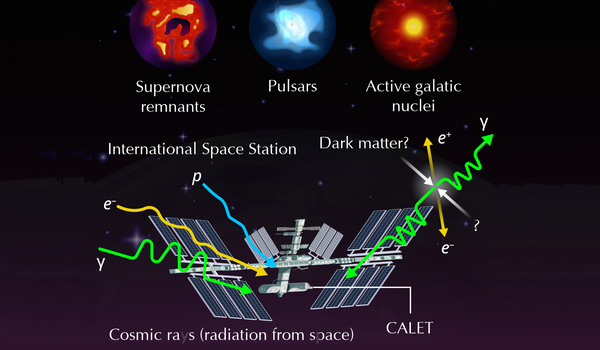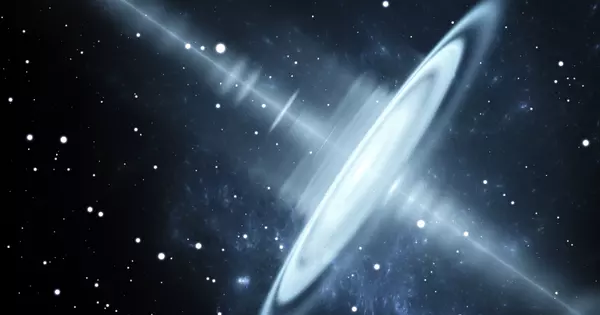Cosmic rays, discovered in 1912, have been extensively studied, and our current understanding of them is compiled in what is known as the Standard Model. This understanding has recently been challenged by the discovery of unexpected spectral structures in the cosmic ray proton energy spectrum. Scientists are now taking this a step further by measuring these protons over a broader energy range with the CALorimetric Electron Telescope, confirming the presence of such structures.
Cosmic rays are high-energy protons and atomic nuclei emitted by stars (both within our galaxy and from other galaxies) and accelerated by supernovae and other high-energy astrophysical objects. Our current understanding of the Galactic cosmic ray energy spectrum suggests that it follows a power-law dependence, in that the spectral index of protons detected within a certain energy range goes down by power law as energy increases.
We developed a detailed spectral structure of cosmic ray protons using data collected by CALET over a period of approximately 6.2 years. The novel aspect of our data is the high-statistics measurement over a wider energy range of 50 GeV to 60 TeV
Kobayashi
But recent observations made using magnetic spectrometers for low energy levels and calorimeters for high energy levels has hinted at a deviation from this power-law variation, with the spectral index of protons becoming larger around an energy of few hundred GeV at energies up to 10 TeV. Following this “spectral hardening,” characterized by a smaller absolute value of the spectral index, a “spectral softening” has been detected above 10 TeV using the CALorimetric Electron Telescope (CALET), a space telescope installed at the International Space Station. However, better measurements with high statistics and low uncertainty need to be performed over a broad energy spectrum for the confirmation of these spectral structures.
This is precisely what an international team of researchers led by Associate Professor Kazuyoshi Kobayashi of Waseda University in Japan set out to accomplish. “We developed a detailed spectral structure of cosmic ray protons using data collected by CALET over a period of approximately 6.2 years. The novel aspect of our data is the high-statistics measurement over a wider energy range of 50 GeV to 60 TeV “Kobayashi elaborates.
The findings of their study, which included contributions from Waseda University’s Professor Emeritus Shoji Torii (PI, or Principal Investigator, of the CALET project) and the University of Siena in Italy’s Professor Pier Simone Marrocchesi, were published in the journal Physical Review Letters.

The new observations confirmed the presence of spectral hardening and softening below and above 10 TeV, indicating that the proton energy spectrum is not consistent with a single power law variation across the entire range. Furthermore, the spectral softening beginning around 10 TeV is consistent with a previous measurement reported by the Dark Matter Particle Explorer (DAMPE) space telescope. Surprisingly, the transition produced by spectral softening was found to be sharper than the transition produced by spectral hardening.
Monte Carlo simulations were used to manage the variations and uncertainty in the new CALET data. The statistics were improved by a factor of about 2.2, and the spectral hardening feature was confirmed with a higher significance of more than 20 sigmas.
When discussing the significance of this research, Kobayashi says, “This discovery will help us better understand cosmic ray acceleration by supernovae and cosmic ray propagation mechanisms. The next step would be to extend our measurements of proton spectra to higher energies while reducing systematic uncertainties. This should be accompanied by a shift in theoretical understanding in order to account for the new observations.”
But it’s not just about cosmic rays in the end. Rather, the study goes on to demonstrate how much we still don’t know about our Universe and why it’s worthwhile to think about it.





